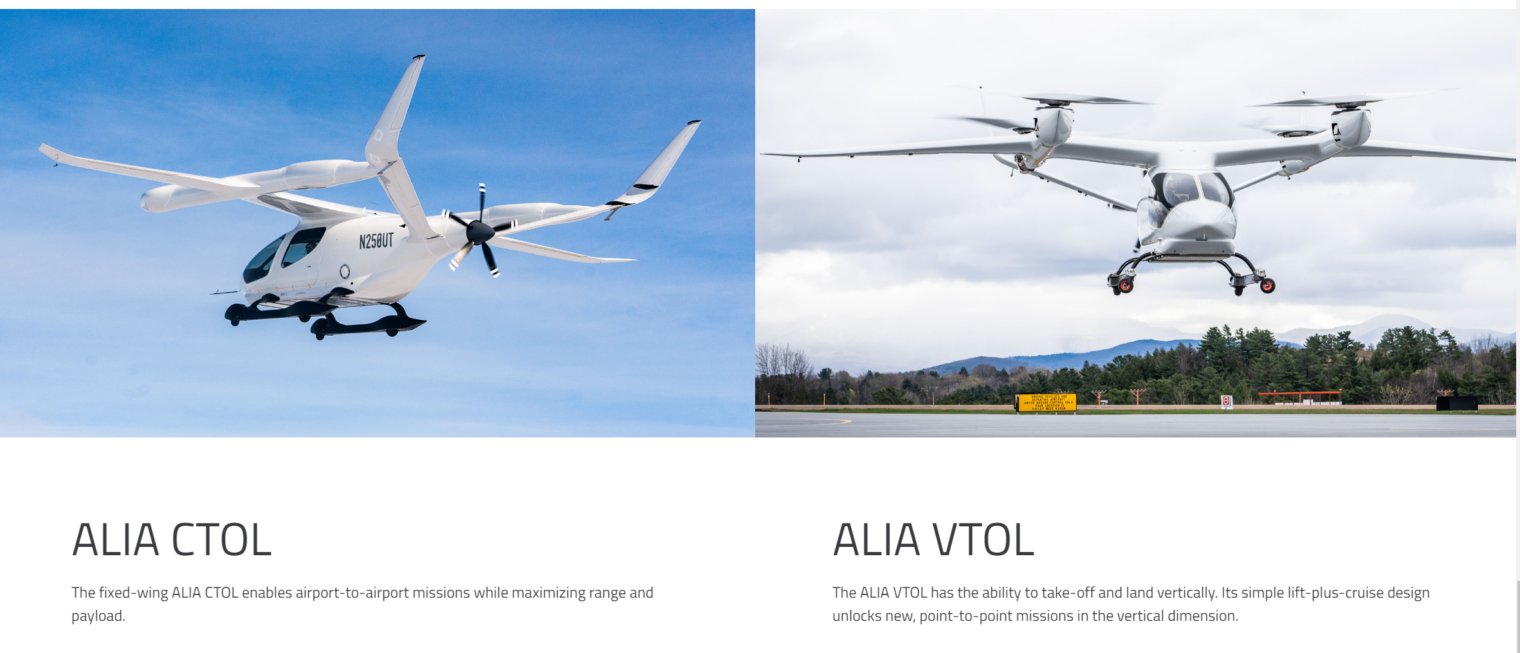Dali, the Singapore-flagged container ship that brought down Key Bridge in Baltimore, presumably had multiple redundant power systems, yet apparently suffered a total loss of power that may have contributed to the bridge strike:
Obviously this is a sad day for the families of those who perished in the collapse, but the accident raises a question regarding electric aircraft. Many of them can’t glide. Absent a Cirrus-style ballistic parachute, total loss of power means that everyone on board will die. The typical design has three independent electrical systems and the calculated chance of a total failure is 1 in 1 billion or less. Yet the same calculation was likely done for the Dali, a much more expensive machine, and total failure appears to have happened nonetheless.
I wonder if this worse-than-calculated performance favors winged designs such as Beta’s.
The “super drone”-style designs can’t autorotate as a helicopter can/must and they can’t glide on wings like an airplane because they don’t have wings.

Here’s an interesting Twitter thread by a bridge engineer from Tampa on the challenge of designing a bridge to be robust to this kind of impact:
https://x.com/mattdursh/status/1772605870599238112?s=46
Dare to estimate how long the repairs will take? And cost?
Russia built a 10 mile bridge for $3.6B in only 27 months (opened 2018, 745ft widest span, also 4 road lanes).
https://en.wikipedia.org/wiki/Crimean_Bridge
Surprised it lasted so long without any buffer zone. The new one will take a page from Calif*, have massive terrorist proof buffer zones, have a wider span, & cost 50 trill.
The point of any VTOL aircraft is to sell an aircraft company, not to make an aircraft.
I have always disliked flying machines that don’t offer a solid ‘plan B’ for survival. For example, I don’t quite understand what would happen to a V-22 Osprey if the engines failed. Perhaps because I’m not familiar with helicopters (I am an instrument-rated single-engine and glider pilot), I have always been quite skeptical of the probability of success in an autorotation. However, after running a query in the NTSB database, I see that most cases of accidents involving autorotation don’t result in fatalities (and perhaps many successful autorotations are not even reported). So now I will take helicopters out of my list of very, very dangerous flying machines and moved to the just dangerous. Multiple-rotor drones that can not autorotate shall remain in the “moronic dangerous” flying machines.
Perhaps there is no activity that has had more moronic futuristic projects than aviation, from medieval winged flyers to current pilotless taxis
You missed rockets. They are way more dangerous than those overgrown drone contraptions.
“calculated chance of a total failure is 1 in 1 billion or less.” What is the unit of comparison? In fatalities per mile traveled the Space Shuttle was only three times more dangerous than driving.
https://www.nasa.gov/wp-content/uploads/2015/03/566250main_shuttle20era20facts_040412.pdf
Anon: I think that it is per flight hour. If the probability is 1e-09 per hour that’s “extremely improbable”. This is the standard that EASA (the European FAA) is pushing, I think.
I am sure the late Richard Feynman would have provided a different chance of total failure.
Philip, engineer forums report that in practice commercial shipping has much worse reliability than the theoretical 1-in-a-B, because electrical outages are frequent (this can be seen allegedly from ships alerting “Not under command” on AIS when they lose power). Some blame it on regulatory capture of marine engineering between the builders and the marine certification bureaus.
If they are right, this kind of accident was a matter of time.
The conspiracy theory I enjoy about this event is the cyber-attack by a hostile power. If electrical redundancy is so bad, surely their IT security can’t be better. But a wise US adversary would keep this in their quiver for when they kick off something big, like China invading Taiwan.
I would like to see a cyber-attack on a two-stroke diesel engine!
Have you seen any good explanations of the cascade of failures that must have occurred? Did the main engine actually quit, for example? Did they lose the availability to turn the rudder? (it’s hydraulic, like an airliner’s flight control surfaces, but electrically controlled?) What would have happened if they’d done nothing rather than tossing one or more anchors out? The ship was pointed at the center of the channel and would have stayed clear of the bridge?
From what I have read, the engine stopped due to fuel contamination. No flow over the rudder, no control. The ship appears to have all the lights on in the videos of the collision.